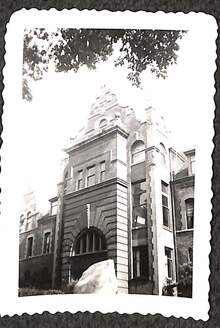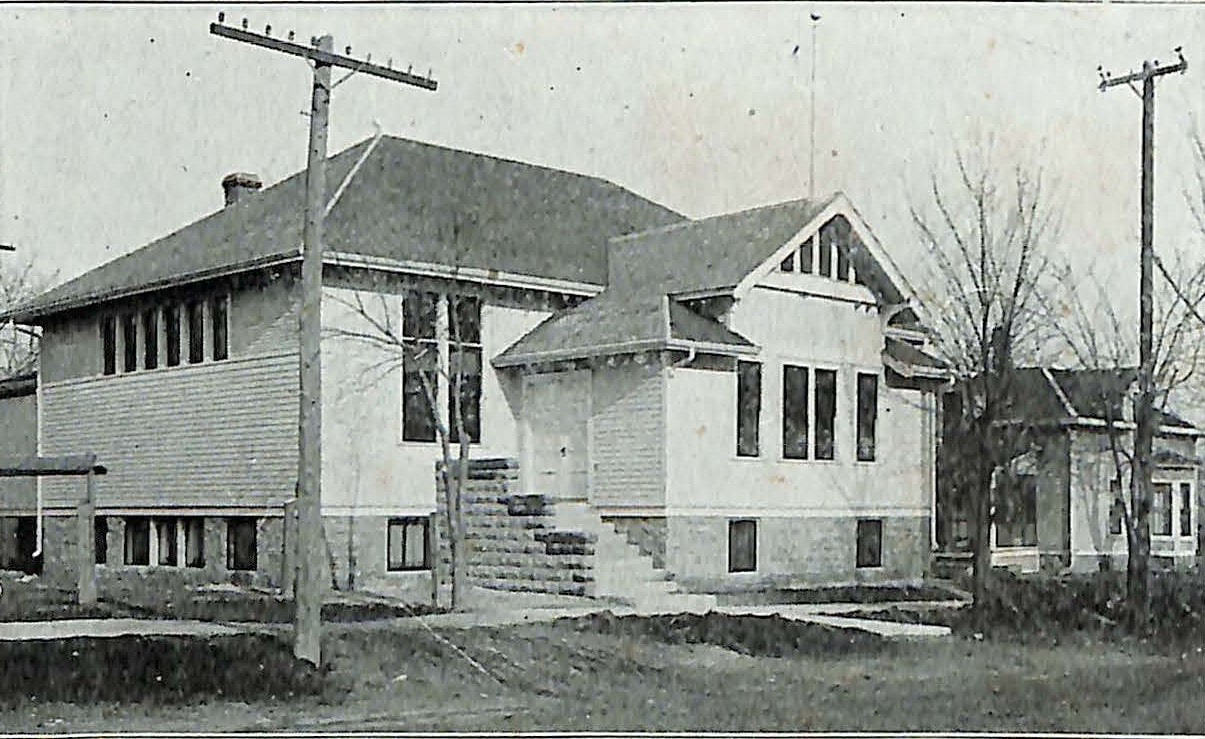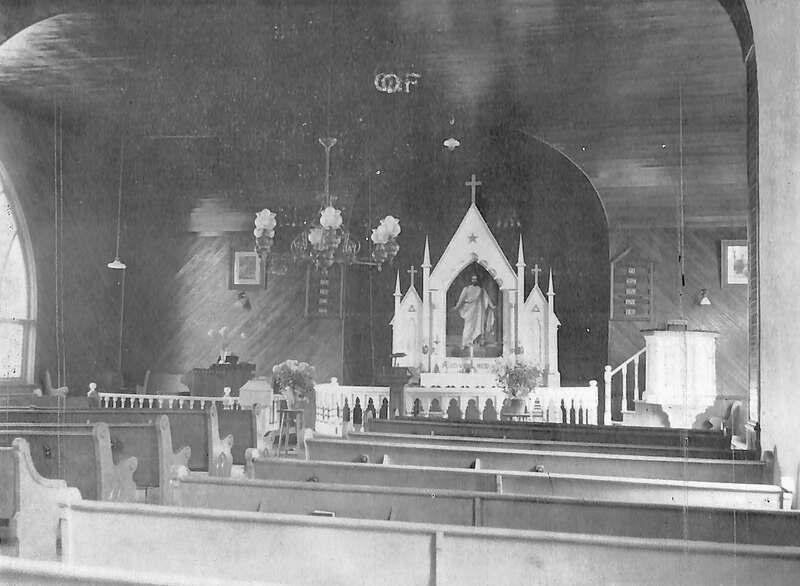Kimballton, IowaFor “Danskhed” [Danishness] and for an interest in such worthwhile pursuit as drama and literature the Kimballton community must place near the top when the laurels are passed out to Danish-American communities. Barber Twenstrup knew his drama as well as his razor, it was quite evident. And when girls of high school age speak Danish on Sunday mornings after English services, one cannot help but marvel. Life to Kamballton Danes evidently means more than a groggy midnight atmosphere of cigar smoke, cards, and hog prices.
|
The twin villages of Elk Horn and Kimballton make up the largest and possibly most enduring Danish settlement in America. Today, between them, they feature the Museum of Danish America, the Danish Genealogy Center, an authentic Danish windmill, a sculpture of the Little Mermaid, historic Danish churches, and a Danish restaurant. |
Des moines, IowaThe improvised stage at Grand View’s gymnasium was the setting for the next production of “Ordet.” The afternoon was spent in making minor adjustments in the stage setting and rehearsing with Norma Knudsen, the child in the Des Moines production and daughter of Prof Harold Knudsen. Dana players broke bread with Grand View students at the evening meal in the college dining hall. Night came, so did the production, and with it EdnaRN’s [sic] elephantine exit. But the boards – loose ones – were the cause.
|
Des Moines is home to Grand View University, the other of the two historical Danish American colleges in the United States. Two different Danish Lutheran church branches founded the two colleges. The Des Moines college was founded in 1896 by what is sometimes referred to as the "happy Danes." Dana College was founded by the "holy Danes." Grand View today has around 2,000 students and is also home to the Danish Immigrant Archives. |
Cedar Falls, Iowa... The Cedar Falls appearance was sponsored by the Brotherhood of Nazareth Church. The “Forsamlingshus” [community house] of Bethlehem Church was used as the auditorium. Here also the troupe met with the first “rising” curtain – with a not too smooth first rise. Editor of Dannevirke, August Bang, foremost Danish-American man of letters, was favorable impressed by the Dana production, wrote a lengthy and appreciate review of the play in the next issue of his paper.
Bethlehem Lutheran Church in Cedar Falls and the parish hall (exterior and interior) where the students performed. (Image: 75th Anniversary Book, 1947.)
Cedar Falls was home to the Danish-language newspaper Dannevirke (1880-1951) and has a long Danish American history. Settling in the area in relatively large numbers from 1870-1900, Danes became the largest immigrant group in Cedar Falls. They were drawn by the availability of farm land and jobs. Immigrants from Denmark encouraged friends and family from the home country to join them as well. The town had many Danish-owned businesses and no less than three Danish churches: Nazareth (Inner Mission), Bethlehem (Grundtvigian), and the Calvary Baptist Church. Danish societies for socializing and insurance/sick benefits included the Danish Brotherhood and the Danish Lyren Association. Danish folk dancing and gymnastics were also popular. You can read more about the Danish history of Cedar Falls in Carrie L. Eilderts' 2015 thesis "Danish Cedar Falls: The Immigrant Experience." |
|
hampton, IowaPlayers found that their auditorium in Hampton was another "Forsamlingshus" built inside a Danish country church in the beautiful rural Iowa setting. Ladies of the church were busily arranging the stage when the group arrived. The pastor’s wife proved to be as vivacious as she was wide and swung out with “Holger Danske”, which Ed happened to be playing on the dust-covered piano. No wallflower was this old girl in her youth, was the opinion of one. When Pastor Juhl had finished milking his cow, the players enjoyed a hearty dinner in the parsonage, with buxom, sawed-off [sic] Mrs. Juhl hovering about the table like a perpetually-clucking mother hen. Truly a page from the distant past of Danish-Americanism was this Iowa community.
|
St. John's Lutheran Church, Hampton, Iowa
(Image: 75th Anniversary Book, 1953). Hampton, Iowa, was home to a Danish community centered around St. John's Danish Evangelical Lutheran Church, founded in 1879. At its peak in 1915, more than 500 people who had been born in Denmark lived in the county. The church property included a Danish school, a parsonage, a hall, garages, and a cemetery. The church is now listed on the National Register of Historic Places as a rare example of a Danish American rural church complex. In Hampton, visitors nowadays can also enjoy the Harriman-Nielsen Historic Farm, which was donated to the Franklin County Historical Association by Danish immigrants. |








